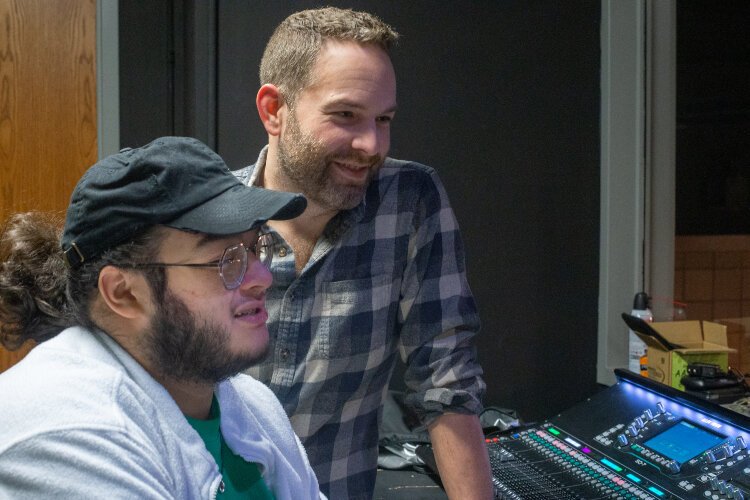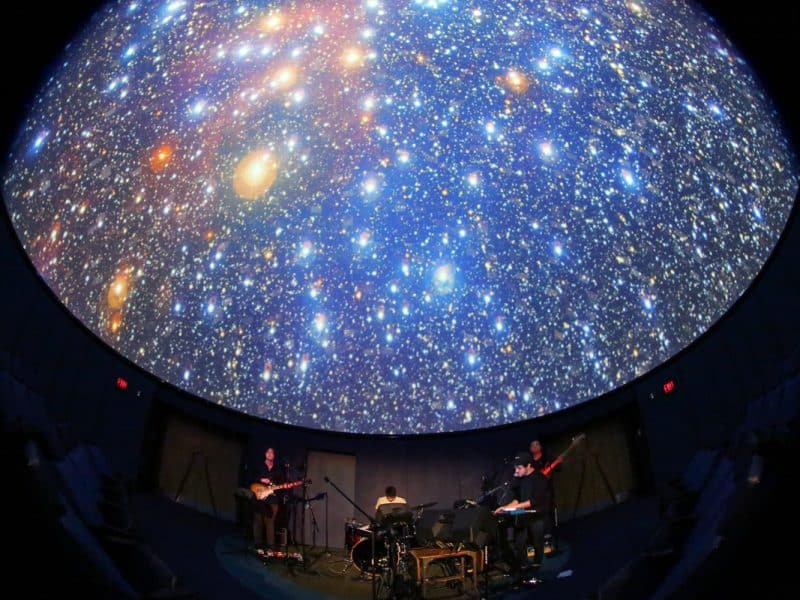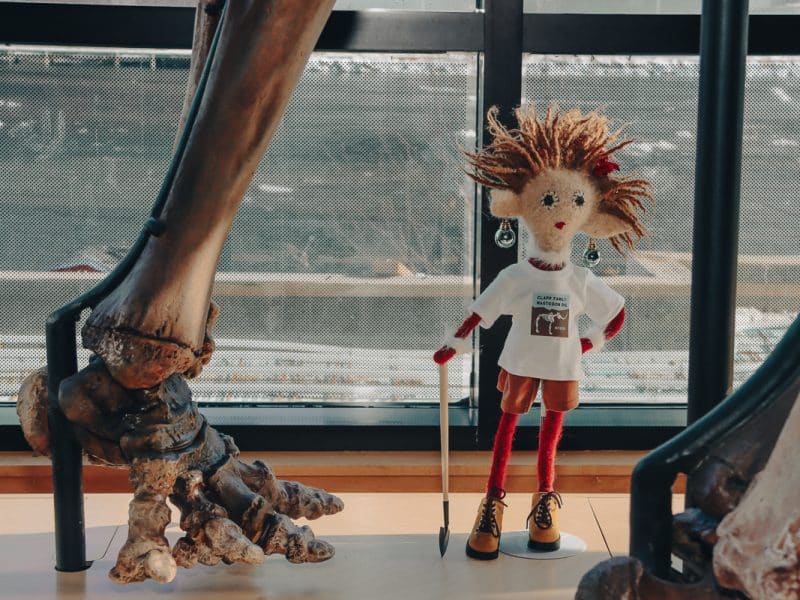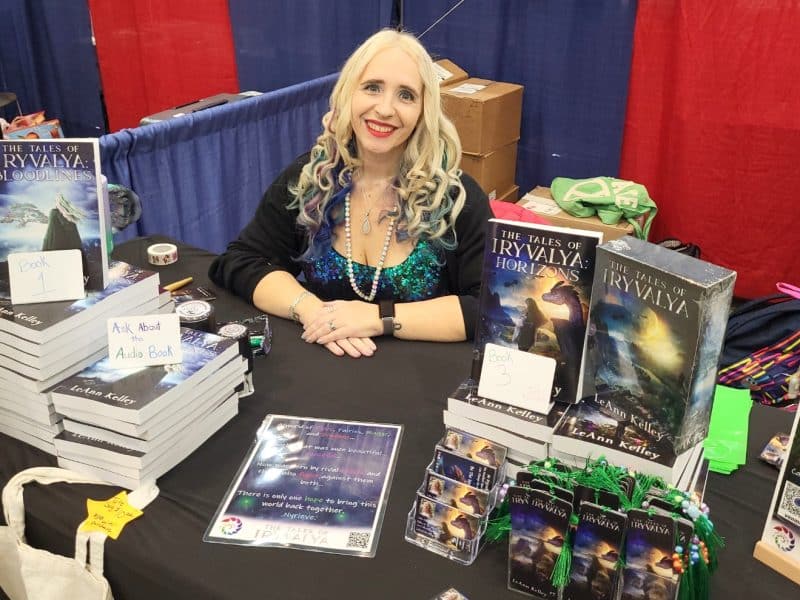Actors’ Theatre welcomes new perspectives, mentors future artists of Grand Rapids
The Actors' Theatre of Grand Rapids, founded in 1980, continues to build on its legacy, evolving as an entertainment outlet as an arts incubator and (ultimately a) regional attractant for talent, too.

When folks think of theatre, we often envision ourselves comfortably seated in the house, looking forward to the stage where the story unfolds as the lights go down. But our local stages offer so much more than just an entertainment option for the masses. The Actors’ Theatre of Grand Rapids, founded in 1980, continues to build on its legacy, evolving as an entertainment outlet as an arts incubator and (ultimately a) regional attractant for talent, too.
Publisher and Lifestyle Editor Tommy Allen catches up with Kyle Los, executive and artistic director of Actors’ Theatre Grand Rapids, on the occasion of a new play, Petty Crimes, created locally by Kristin Hanratty and debuting on Grand Rapids Community College’s Spectrum theatre stage.
____________________________________________
Tommy Allen (TA): Folks talk about incubating talent in our community, so I am curious if the theatre wing of our arts scene is possibly welcoming talent beyond what we see on stage in front of us as an audience.
Kyle Los (KL): The artists you see on stage don’t even begin to scratch the surface of the artistic talent being poured into productions. Truly!
TA: So when we sit in the audience, the stage at Actors’ Theatre Grand Rapids is the start, not the end, of the talent opportunities awaiting our creative sector’s talent?
KL: At a minimum, a smaller play has at least 15 artists working on it, from the director to stage managers, technical designers, deck crew, painters, and on and on. And that’s the smallest team of artists. Add additional musicians, fly crew, choreographers, etc., for musicals…
TA: …the list sounds long….
KL: ….then multiply that across 10+ theatres and university theatre programs that are each producing four or more shows a year, and that’s a lot! It’s an incredibly impressive artistic and collaborative operation.
TA: It sounds like our artists’ pool might be deeper than most think.
KL: In order to meet artistic demand on such a scale and with community-wide year-round programming that often overlaps between organizations, there’s a need to expand the pool of artists in town continuously.
TA: Can you give me an example?
KL: Actors’ Theatre was born alongside the Grand Rapids Community College (GRCC) theater program, and as such, we’ve always strived to work closely with their students…
TA: …Rapid Growth has covered your events for over 17 years now and we have always acknowledged this benefit or, better yet, the opportunity Actors’ Theatre has in store for theatre students at GRCC…
KL: …it’s a great opportunity for students to engage in new and unique theatrical productions, and also for them to receive one-on-one practical training.
TA: Any examples to share of how opportunities can manifest themselves?
KL: I often serve as sound designer for both Actors’ Theatre and GRCC theatre productions and need sound board operators. Over the past couple of years, I’ve had the pleasure of working with GRCC student Antonio Aguilar. They came in eager and ready to work. They quickly picked up the technical aspects of programming with our software, and beyond that, they seem to have a great natural sense of storytelling through sound and music.
Antonio is a vocal performance major planning to graduate next winter. With their training, they come with a great musical proficiency which certainly helps with this craft.

TA: And is Antonio still working with Actors’ Theatre?
KL: Antonio will be serving as a sound design apprentice with me for our upcoming production of Witch in June. I’m extremely excited to see what they bring to the table!
TA: Are there other areas where you can share an access point for talent to intersect with Actors’ Theatre’s mission to provide not just quality programming but offer opportunities for talent to garner real-world experience?
KL: The same happens with props, lighting, costuming, stage management, etc. Granted, for us at Actors’, that’s a relatively smaller scale…perhaps only one assistant per department. Others in our market, like Civic Theatre, offer a wonderful program training technicians and designers on a larger scale. It’s a great opportunity to get your feet wet and meet folks already working in the community.
TA: Outside of technical, are there other programs that help lift up the creative voice in our community?
KL: One artistic area that Actors’ has historically been focused on is being a platform for local playwrights. This has looked different across our 40 years. Around 1984 we began a summer series where local playwrights could submit work to be workshopped and performed. We were discovering much local talent.

TA: Any examples of early workshop successes to share from your history?
KL: Two of our most successful of which were Rodney Vaccaro and Jean Reed Bahle. One of Rodney’s plays, And the Home of the Brave, was adapted by him later for television, winning an Emmy Award. One of Jean’s works, three connected one-acts, was performed at the Michigan Community Theatre Festival, winning a prize as a playwright.
TA: As we move forward in time, were there others?
KL: In 2000, Dr. Stephanie Sandberg, a (then) theatre professor from Calvin University, joined Actors’, first as a director, but soon after as a resident playwright. Her first work was the stunning Seven Passages: The Stories of Gay Christians. She created two more main stage shows for Actors’ before moving on to a successful teaching and playwriting career. We also were fortunate to make the acquaintance of Austin Bunn, a visiting professor at GVSU whose play about factory workers losing their jobs when the plant closes became Actors’ production of Rust.
TA: I recall both of these productions and am a fan of how they were based on interviews conducted within the groups these stories were centered. They are powerful examples here to share as I recall “Rust” being written up later in the New York Times Magazine.
KL: Eventually this program morphed into a 10-minute play festival. This lasted until the pandemic shut it down in March 2020. Civic Theatre has since launched its own 10-minute play festival, which is similar to what we were running pre-pandemic, but now on a larger scale. We’re now reinventing our programming to fit new, emergent artistic needs and opportunities.
TA: I am certain with a larger program comes even more opportunities for folks to see their works travel outside our community.
KL: Living On the Edge, our 10-minute play festival, has introduced us to a handful of very incredible playwrights who are becoming very successful across the nation. One such playwright is David MacGregor who has submitted work and had it performed with our series a few times. He’s had full-length plays performed across the nation, including a production I had the pleasure of seeing at The Purple Rose Theatre Company (Jeff Daniels’ Michigan-based Equity theatre), Vino Veritas.
TA: I also understand that another voice from our community will have their work staged and presented on Actors’ stage running March 2 to March 11.
KL: Kristin Hanratty is another playwright that we’ve often worked with. The first play she wrote was produced 13 years ago as part of our series and she’s gone on to have over 20 short and a few full-length plays produced across the nation.
TA: What path did her latest work take within your organization as Hanratty might be an exception given her long history as a playwright?
KL: During the pandemic, Hanratty approached me with a new work, Petty Crimes, that hits very close to home with her full-time work as an attorney. It also is perfect for our mission to be producing thought-provoking theatrical works. For the past year and a half, we’ve been workshopping the script with Hanratty and now are preparing to open the world premiere of Petty Crimes as a part of our 40th mainstage season.

TA: Wow, working with a theatrical mentoring team seems incredible. But how does the work get discovered after being penned?
KL: I know there’s often a general feeling that folks have to be “at the right place at the right time” to “get a break,” but the community theatres are all working to create engagement opportunities for local artists to get involved, which can become pipelines to other types of work.
TA: Any other positions or opportunities you wish we could start to see more of here in our theatre groups.
KL: One unique role that we’ve seen resurface is the role of the understudy.
TA: I would think this would have been there all along, but as I recall how busy we all seemed to be pre-pandemic times, it makes sense I guess that talent would be hard to nail down for such a luxury and important position. So the pandemic has shown a need for this position to be filled?
KL: Our area theatres had to figure something out during the pandemic, so that a sick cast member wouldn’t mean closing down a production for days and days. Theatres across the nation were relying on understudies and swings at remarkable rates — regional theatres, tours, and on Broadway. It was truly remarkable to watch.
On a professional level, there are always swings/understudies, and often I’d hear, “oh no, there’s an understudy in for ____ (insert famous name here) for this performance,” followed by, “WOW! I’m so glad we got to see them in that role! They were incredible!” There was a misunderstanding that, somehow, understudy meant “worse.”
TA: Well, we have all held tickets to Broadway shows only to see the main talent be absent on the day of our arrival. So I see how we get there in our thinking.
KL: Frankly, the understudies and swings work their asses off having to be prepared to, generally, go on for two, three, or four different roles on any given day. So this is something we’ve seen locally grow in importance since the pandemic. Often the individual serves in an ensemble or some other capacity but is learning the blocking/movement, lines, and characterization alongside the other performer.
TA: I have always been a huge fan of all the shows I have seen at Actors’ Theatre because the talent on stage has been jaw-dropping wonderful within many of the performances. Anything else we should know about how Actors’ is creating a culture of opportunity within our local arts scene?
KL: There’s a newer role that has emerged and expanded since the 1960s in America. And that is the role of the dramaturg.
TA: I have heard this term often but never really considered its impact. Go on…
KL: It’s the dramaturg’s job to be doing in-depth research into a show in order to help fill out the nuances. For instance, someone might be studying specific terminology within a time period or industry. Or, in the case of Hanratty’s show Petty Crimes, they would be doing research into the details around jury deliberation.
Since Hanratty is an attorney, within the dramaturg’s role she could offer first-hand information that assisted our understanding of the scenic and prop designs, as well as characterization.
TA: So it adds depth to the performances that might otherwise be missing and, in the end, creates something of depth.
KL: It’s a fun and exciting opportunity! Fred Sebulske, the founder of Actors’ Theatre (and the GRCC Theater program), has said that if this had professionally existed when he was at university, he probably would have gone on to study that.
TA: This sounds like a lot is being designed within your organization for our area talent’s benefit. So how is design playing a role?
KL: Design is an equal partner with Actors’ in storytelling. Each artist works within their own department/art form to help tell the same story. They’re essentially creating an additional character that exists on stage with the actors.
With Sound Design, for example, I might need to assist in creating an atmosphere that sounds like a specific time period or location (or lack thereof) through ambient sound, instrumentation, etc. But often, the more difficult work is the sound design between scenes. I need to either craft or find music or sound that bridges a gap in the story from one scene to the next. That includes mood, location, etc.
TA: Understanding your long history of innovation and welcoming thought-provoking theatre, how is this activity of offering more than just a stage to perform on transforming our creative community for the better?
KL: It allows folks with varying art forms to participate in a very beautiful and vital world of storytelling. Humans are story-focused creatures. We love to tell our stories and hear others’ stories. It’s essential for us to be seen and heard, and theatre is a part of that. And as artists offer their crafts into each story that is being told, a more full, honest, and beautiful experience emerges for all involved — onstage, backstage, and in the audience.
TA: Any closing thoughts before the curtain rises again in a few days?
KL: As I was sitting through our first dress rehearsal for Petty Crimes debut, I could watch moments on stage and think of the number of individuals who impacted a single moment. And that moment is beautiful and fulfilling. No, the audience doesn’t need to know every single question, idea, or inspiration that went into that moment because the honesty of it speaks for itself.
We often say that what makes theatre so different from digital mediums is that we’re sharing space together … watching living, breathing humans on stage. I love the collaborative theatrical experience because every moment of the process has life being poured into it. It’s an inspiring gift that is centered on our humanity.
____________________________________________
Kyle Los is the executive and artistic director of Actors’ Theatre Grand Rapids. He was recognized as a part of the Grand Rapids “40 Under Forty” in 2014. He is an awarded actor, director, sound designer and scenic designer.
Petty Crimes performs March 2-11 in Spectrum Theater on the Grand Rapids Community College campus. Tickets can be purchased online at atgr.org.
Actors’ Theatre is proud to offer pay-what-you-can ticketing for every production, because theatre is powerful storytelling and should be accessible to all.
Photos by Dave Kagan courtesy of Actors’ Theatre Grand Rapids
Illustration by Mark Stegeman









